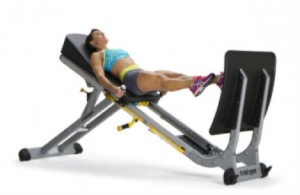THE HACK TEST: To Hack or To Adopt the Culture
Tim Ferriss is all about the lifehack, and he’s had great success at it (and been very fun to watch in the process). He gets us thinking about possibilities . . .

As we seek to make changes in our lives—in our health and fitness, what is a test to see if a hack is appropriate or inappropriate?
In an emergency situation, I would say “anything goes.” In a situation of long-term physical development, I would say it should be done if the hack supports both independence and sustainability.

In The Story of the Human Body, Daniel Lieberman writes that, though human evolution is potentially at a standstill, humans continue to evolve by creating evolutionary culture. The culture that shapes human beings is what evolves first.
Maybe the things that change culture are hacks and the ones that stick become cultural wisdom. The ones that don’t are the shortcuts that we seem to master in the west—the ones that don’t seem to be sustainable. We don’t seem to be able to maintain them independently.
For some reason, the best hacks in the world take us closer to both economy and ecology—those things that are extremely efficient and have a fair exchange of value, and those things that also support a harmonious balance over long periods of time without exploiting either side of the equation, the organism or the environment.

In Born to Run and Natural Born Heroes, Christopher McDougall has given us two opportunities to see that culture might be the best way to approach something as simple as running and/or something as complex as becoming a hero.
Simon Sinek has warned us to always Start With Why. Many of the things we do culturally just seem to work. Why we do something is often because it is a thing that will occur whether we intend it or not. When it does occur, it is so profound it becomes part of our culture. We don’t necessarily even identify its impact. We do it because we do it.
Unfortunately, in today’s world of metrics, we’ve become a culture that loves tests and their accompanying numbers. The problem is that we’re shortsighted and teach to the tests. We directly confront blood pressure and cholesterol with drugs that make pharmaceutical companies rich and continue to not solve your problems. They simply cover your symptoms . . . pain management, not cure.
To create independence and sustainability with cholesterol and blood pressure, first, make sure that these measurements mean something and second, find a culture that rarely has problems with either. If we apply that simple litmus test to whether we should hack something or not, then when it is time to develop a hack, maybe there’s already a recipe that keeps us from wasting time.
In my attempt to improve both movement health and movement function, I came up with some principles that seem not to just apply to movement but to almost any behavior. Move well always comes before move often. A minimum level of quality should probably precede pursuits of quantity. Anything you do ceases to have value if a minimum standard is not met.
When would this quality requirement be inappropriate? First is a situation where long-term sustainability is not necessary and quantity has a significant value regardless of quality, but these opportunities may be few and far between.
What if you are thirsty? There is a point where water quality can be so poor that it would actually behoove you to avoid that water source because you will experience a greater decline in your health by drinking poison than by going another 10 hours without water.

The second is human intervention. Hippocrates, the famous Greek physician, warned us to “do no harm.”
In our enthusiasm to step between the organism and the environment and say “Let me teach you. Let me train you. Let me coach you. Let me help you heal,” those of us who teach, coach, train and attempt to facilitate healing should heed Hippocrates’ advice.
Sometimes, our enthusiasm clouds the big picture. If we’re focusing on metrics, we may strive to improve one biomarker while creating side effects and erosion elsewhere in the human system.
That’s why most drug commercials (the ones that tell you that you absolutely need their product) have two benefits and 35 pitfalls. It’s not natural, it’s not independent and it’s not sustainable. You could not derive that drug on your own. It is not given freely. You cannot be independent.
If you’re poor, you can’t afford it. If you’re not a chemist, you can’t engineer it. However, it’s great business and that’s the company aspect of pharmaceutical companies.
Healthcare and fitness are not immune to this shortsightedness. We find biomarkers in healthcare. We find biomarkers in fitness. Without focus, we fail to understand the entire cultural embrace that changes these markers.
Our educational system is a prime example. We came up with Standards of Learning (SOL testing – or whatever your state’s equivalent may be) to ensure that teachers were doing their job and to identify children who were not functioning at proper levels despite effective teachers. Basically, the SOL gives us a gauge.
If all the children in the class are not making the standard, the focus should probably be on the teacher. If a certain percentage of the children in the class make the standard but some don’t, the focus should probably then be on the individual student. Sounds simple, right?

The problem is that so many teachers have been limited and handcuffed by this new style of analysis of quality that many simply submit and teach to the test.
Physicians, trainers and coaches are sometimes no different. We find the one standard that seems to dictate our success and instead of creating a culture that gets there anyway, we create a shortcut. We take our machete and hack a path.
That path may require high levels of maintenance. It may be unsustainable. It may not teach life lessons or create independence in those people we’re trying to develop and help.
In short, we should try to find biomarkers that both cause and correlate those things that we prize in culture—the ability to exist in harmony with our environments and to live a long, healthy and happy life.
Hopefully, these caveats are self-evident. But all too often, it seems they are not: when we try to gain a competitive advantage, it can only be done for a short time. Rarely can it be done and sustained for a long time—the same way we don’t always see success transfer through generations.
Those very qualities and behaviors that could make a parent unbelievably successful by societal standards may make their children choose behaviors in exact opposition. Remember, that which makes us successful in one aspect of our life could actually be borrowing equity from another part of our life.
So, if there is such a thing as hacking and if it is good, hacking is simply working your way through a maze. If there is a shortcut, then use it if your life is threatened and if time is of the essence. If you discover a shortcut in other circumstances, it might be better to heed the warning that many shortcuts lead to pitfalls, and often, the detour—the long way around—is the safest.

Testing creates detours. Testing simply provides metrics and the opportunity to see or predict failure at the next level. If you can’t pass the eleventh grade, there is a significant statistical chance that you will not find success in the twelfth grade.
If we look at tests as windows into the future and use them accordingly, then we wouldn’t necessarily teach to the tests. We would simply want to adopt a culture that was independently sustainable that got us to the next level.
Now, if it takes a little longer than you want or if it’s a little risky, that’s where human intervention comes in. The job of the teacher, coach or even somebody who’s helping you heal is not to do it better than the natural environment could do these things for you. That said, in every situation we should ask “can these things be done with less risk and with greater economy? Can they be done faster and safer?”
There is a natural cycle of things that requires both qualitative and quantitative balance. A little extra is sometimes what’s afforded and a little less is sometimes what you get. Human intervention, because of our very short timelines, is focused at success. But nature simply says that non-failure is the best option, especially if tomorrow is in play.
If the physical hack test works for you in your own life on your own body, maybe it can be applied to things like diet, work, relationships, recreational pursuits and lifelong goals.
When the terms independence and sustainability are used, it does not imply that you do not continue to have teachers or learning opportunities. It means that you are self-sufficient at learning. Sustainability speaks to long-term movement development.

Obviously, we can never be completely independent and nothing is sustainable forever but the higher levels of independence and the greater rate of sustainability are indicators that the culture is the best environment for adaptation and long-term movement development.
Remember, Lieberman says that the reason we’re evolving is because our culture has evolved and then those things evolve us. When development is inefficient, not ecological or not impressive, it’s an indication that the culture is not beneficial and has not evolved in the correct direction.
Let’s look for efficient and ecological development. Let’s explore those cultures.
Click here to learn more about Three Principles you Can Apply to Any Movement

Or check out the Principles Digital Bundle
from Gray Cook, Physical Therapist, Lecturer, Author http://graycook.com/?p=2667
















